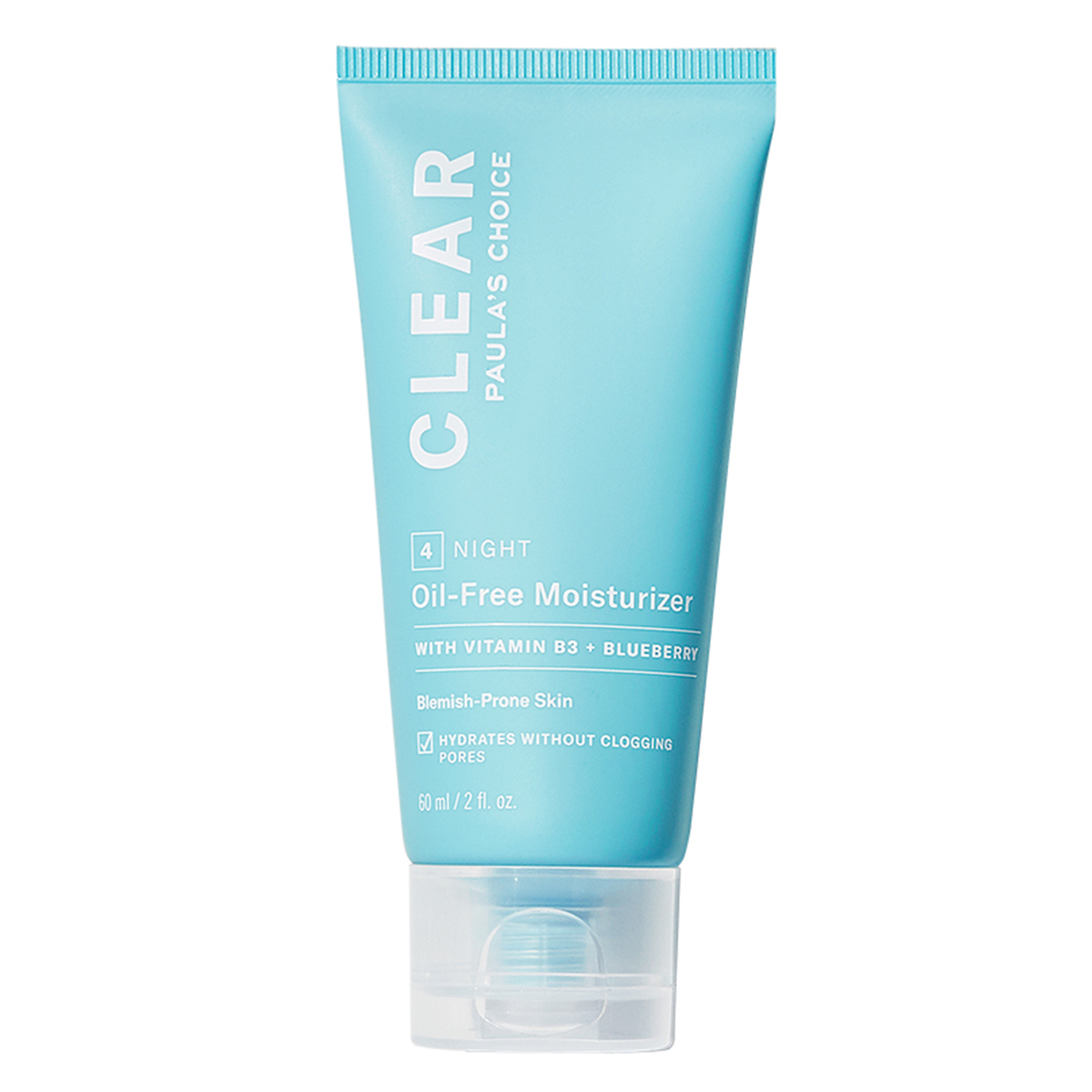I Tried the New Treatment That Claims to Work as Well as Accutane—and It Worked

In a rather frustrating turn of events, I never struggled with my skin (or acne, in particular) until the clock struck midnight on my freshman year of college. What I assumed to be a normal, hormonal, and perhaps vodka-and-late-night-pizza-habit-incurred skin fluke, turned out to be an eight-year-long battle I've dealt with ever since. Since college, my acne has ebbed and flowed. It almost always improves when I'm taking care of myself—getting sleep, drinking water, and using the products I know play nice with my skin. But since my congestion is hormonal (as both dermatologists and my gynecologist have confirmed), there is only so much I can do.
Riddled with low self-esteem and frustration two years ago, I opted to try spironolactone, an oral medication traditionally used to treat high blood pressure and other cardiovascular conditions but more recently has become a common dermatologic prescription for hormone-induced acne flare-ups. According to Breana Wheeler, MSN, NP, dermatology nurse practitioner at Facile Dermatology & Boutique, spiro is often prescribed in low doses to help treat moderate to severe instances of hormonal acne. It's a diuretic (versus a hormone) and works as an androgen blocker to mitigate the effects of male hormones in the body like testosterone, which can contribute to oil production and acne.

My skin began to clear, and within a month or two, I was virtually breakout-free and had the clearest, brightest skin I'd experienced in years. The downside? I didn't feel comfortable being dependent on a medication in order for my skin to look good. Plus, my period disappeared, and I experienced a little bit of weight gain. These aren't common side effects (one of the reasons spiro is so popular is how safe it is), but I felt uncomfortable nonetheless and went off of it. Not surprisingly, my acne came raging back even worse than before, but my period reappeared and the extra couple of pounds fell off almost immediately.
Months later, my acne still felt out of control, and the facialists and dermatologists I consulted recommended I try a topical prescription or a more intense oral medication like Accutane to clear my skin. My reaction? Not thrilled. So you can imagine my excitement when one of my favorite dermatologists (Jennifer Herrmann, MD, FAAD at Moy, Fincher, Chipps Facial Plastics & Dermatology) reached out to me early in the New Year with news that they'd be offering a breakthrough new acne treatment called Sebacia. Essentially, she explained, Sebacia is a novel, industry-changing option that does the same thing as other medications like Accutane (aka, it targets and cuts down oil production) with zero side effects or downtime. So being the acne-prone beauty investigator that I am, I tried it. Keep reading for everything that happened and everything you need to know.
What Makes Sebacia Such an Exciting Breakthrough?

As Herrmann explained to me and as you can read on the Moy, Fincher, Chipps website, one of the reasons Sebacia is so exciting is that it's truly the most game-changing acne breakthrough in nearly 20 years. It only just received FDA clearance in the U.S., and Moy, Fincher, Chipps is actually one of the first centers in the entire country to add it to its roster of dermatologic services. For context, I asked Herrmann to explain what the most common solutions were to treat acne (and any issues they presented) pre-Sebacia.
"The treatment plan greatly depends on the type of acne a person has," she begins. "Hormonal acne is often treated with birth control pills and/or spironolactone, but many women experience bloating or mood swings on birth control and spironolactone, especially at higher doses, can cause breast tenderness, irregular menses, or dehydration. Plus, neither of these medicines is appropriate if you're pregnant or contemplating pregnancy.
"For mild acne, we often use a combination of topical cream or gel medications, which can cause excess dryness, redness, or irritation. For more moderate acne, in addition to topicals, we often add oral antibiotics. While the aim is to kill the bacteria implicated in acne, they indiscriminately kill all bacteria, including good varieties on our skin and in our guts, which can lead to increased inflammation and potential antibiotic resistance if taken longterm."
Last but not least, Herrmann brings up isotretinoin (previously known as Accutane), which is often prescribed to treat severe acne cases. While it's typically very effective, it has multiple potential side effects, including elevated cholesterol, stress on the liver, mood changes, birth defects, and significant skin dryness and irritation.
Sebacia, on the other hand, is completely different. While it's similar to Accutane in the way in which it targets the oil gland to limit oil production, it's a topical (versus oral/internal) treatment executed at your dermatologist's office three different times over the course of two to three weeks. It's comfortable despite some mild zapping from a laser (don't worry—I'll get to that part in a second), and best of all, there is no downtime or reported side effects.
What's the Step-by-Step Process?

"Sebacia is a novel approach to acne because it uses a topical product as well as a laser to specifically target oil glands," Herrmann explains. "Small gold particles are massaged onto the skin, travel down the hair follicles, and then the excess product is rinsed from the surface of the skin, leaving the particles in the oil glands. A laser is then used that specifically targets the gold particles and heats them, which collaterally restructures the oil glands to produce less oil. Because excess oil production is part of the pathogenic process in acne, reducing oil production works to improve it."
As I mentioned, one of the best perks about Sebacia is how convenient, fast, and painless it is. Typically, each appointment will take between 30 and 45 minutes. Although, your first may take a bit longer if your dermatologist takes the time to sit down with you and explain the treatment process, expectations, results, etc., as Herrmann did with me my first time in.
For each and every Sebacia treatment, you'll start with a clean, freshly washed face (you can either come in ready to go or wash your face at the derm's office), and then your practitioner will begin the first of three steps.

Step 1: Apply the Sebacia Gold Particles
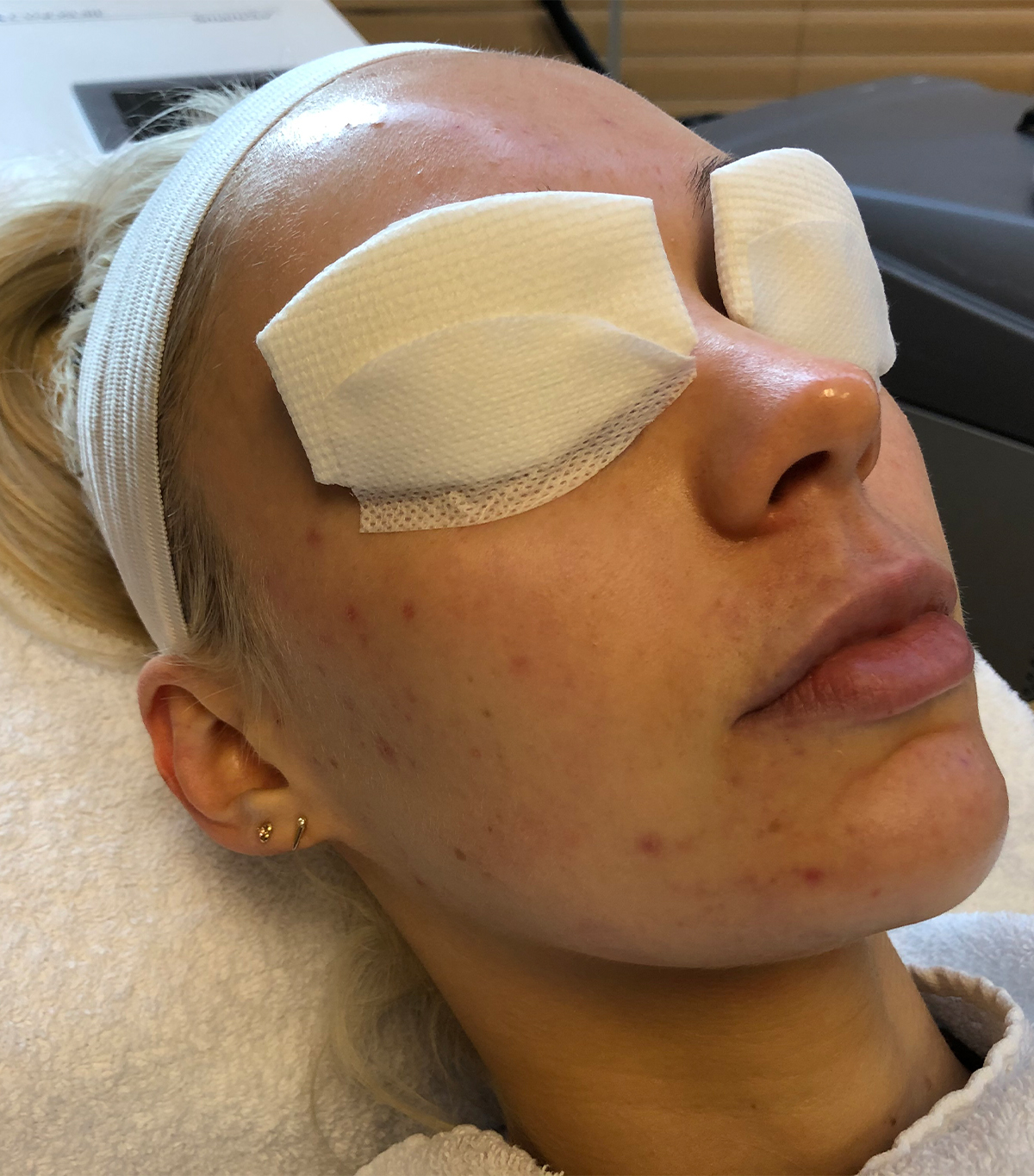
Although the formula looks inky and black (you'll definitely want to make sure your hairline is protected with a headband), it actually contains Sebacia's signature gold particles, which will be massaged deep into your pores by the practitioner.
"The Sebacia microparticles are engineered to be highly effective at absorbing (not reflecting) light and converting it to heat," the official Sebacia website explains. "The microparticles solution appears black because most of the light is absorbed and very little light is reflected. The Sebacia microparticles are actually made from real elemental gold, but their size and shape cause the solution to absorb light and appear black."
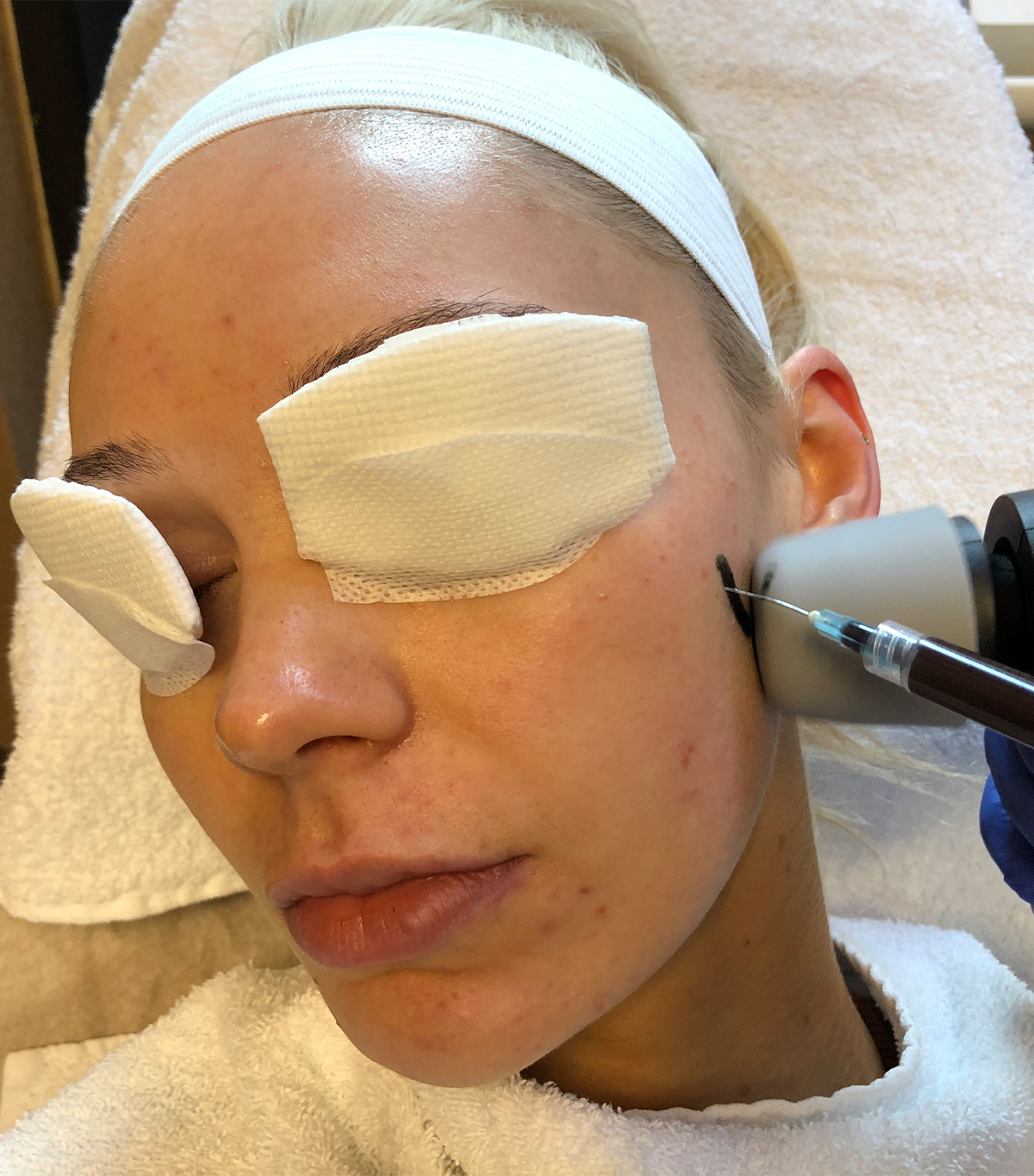
Step 2: Massage the Particles Into Your Pores
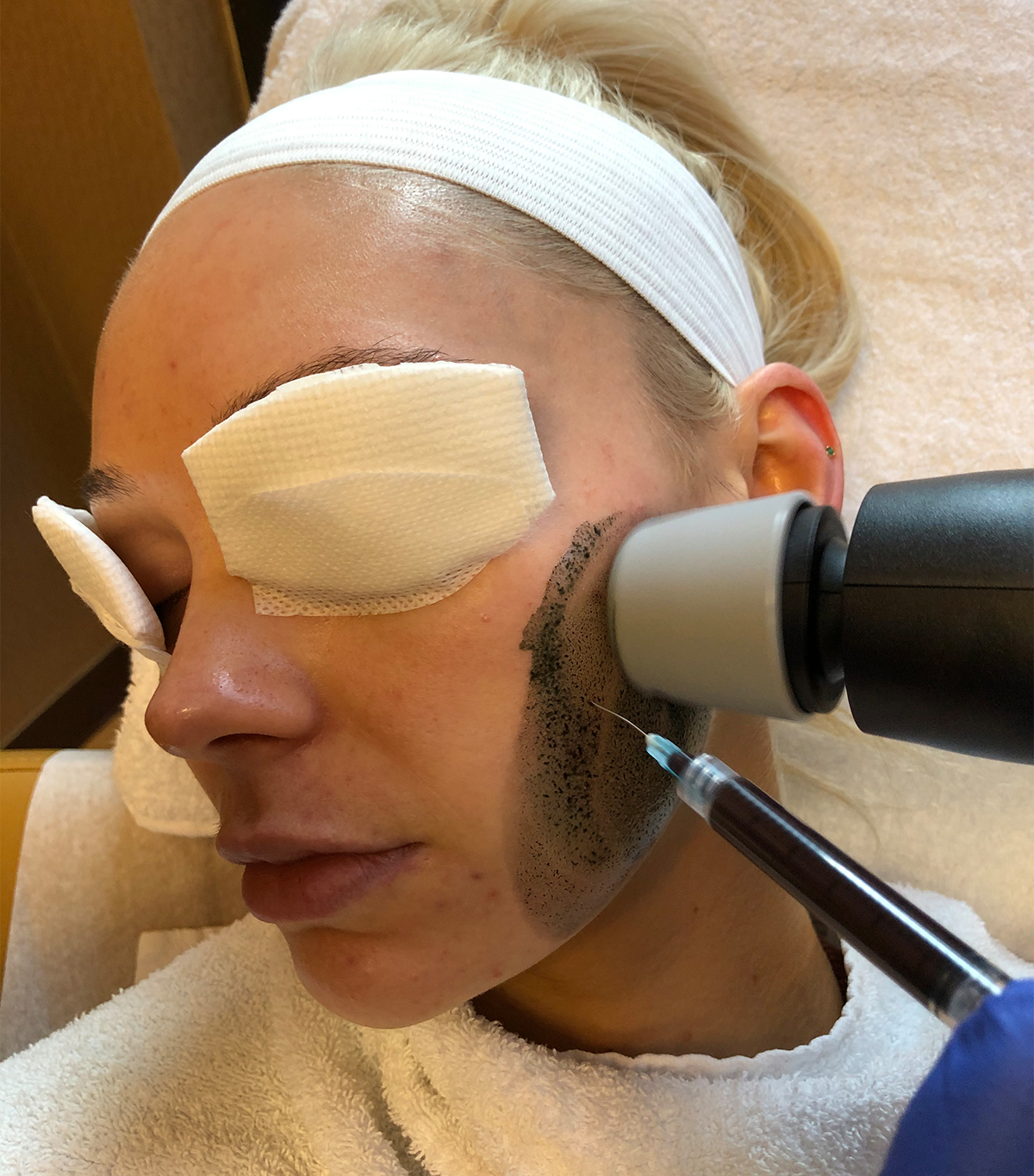
This part feels really good! The gold microparticles are gently massaged into your skin by your Sebacia provider using an electric massaging tool to thoroughly work the microparticles deep into your pores. This needs to happen for roughly 10 minutes, and then your provider will remove the formula from your face with warm water.

Step 3: Heat the Microparticles Using a Laser

Next, a common dermatology laser is applied to the skin to heat the gold microparticles, which heats the pores and glands that produce oil. According to the Moy Fincher, Chipps website, this highly targeted method of heating results in fewer acne lesions and an improvement in the appearance of your skin over time. After the laser (which is slightly painful but nothing too intense or alarming), you're quite literally ready to head out of the door. I went straight to the office and didn't experience any inflammation or pain, In fact, I actually got lots of compliments on the "bright, glass-like" look of my skin.
Potential Side Effects & Candidacy
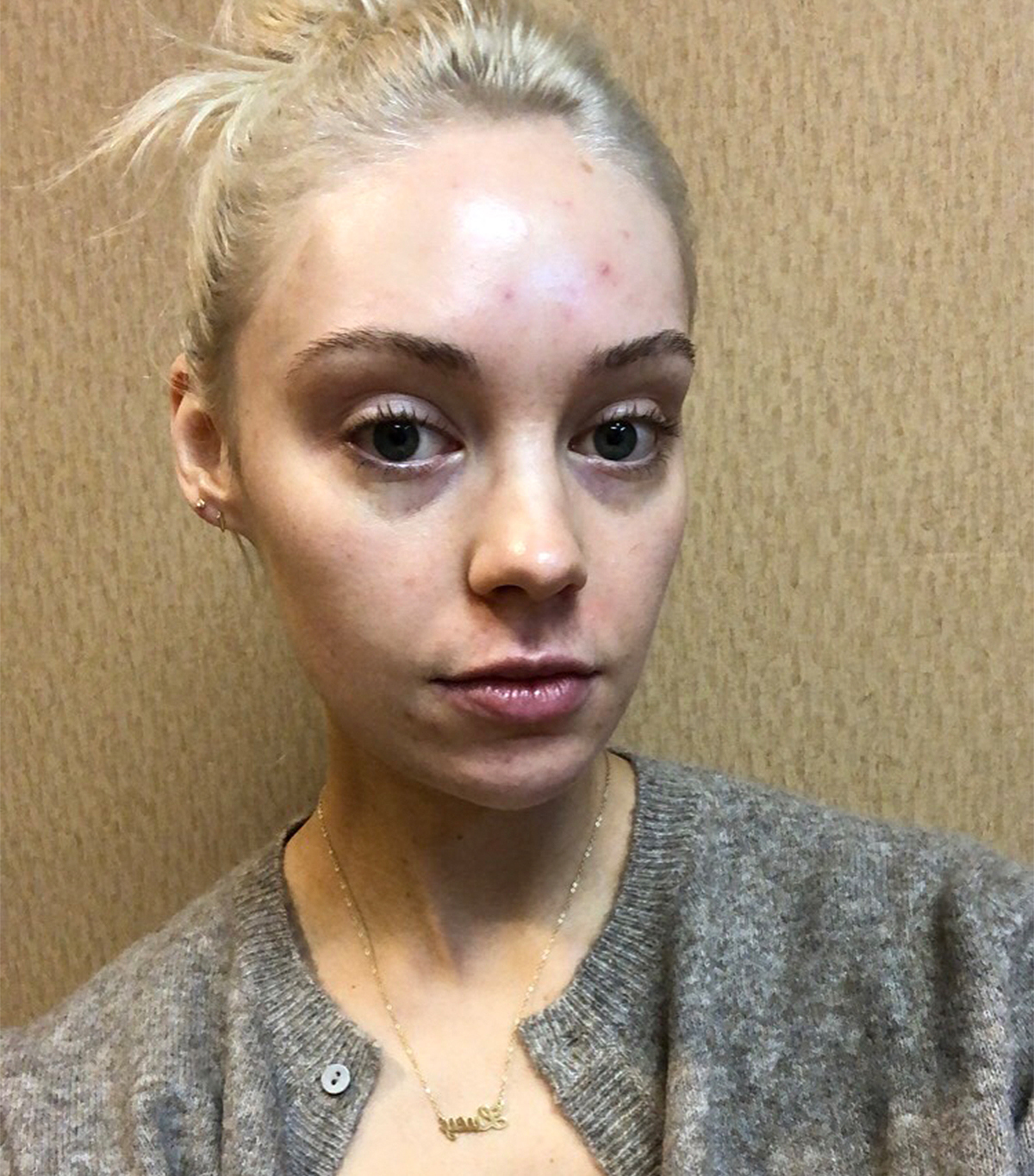
Though Herrmann tells me some clients may experience minor inflammation (i.e., redness or pinkness) in addition to mild swelling post-treatment, Sebacia is actually incredibly safe since nothing is absorbed into the bloodstream or ingested. Plus, the specific laser that is used (an Nd:YAG) is safe and approved for most skin types and all skin tones.
"Most of the studies to date have been done on patients with classic acne, so we don’t have much data for those with hormonal acne yet," Herrmann points out when I ask if certain acne types are better candidates than others. "Some patients I have already treated have improved. However, if patients have very severe acne with large inflamed bumps, the hair follicles may be compressed from surrounding swelling, making it harder for the gold particles to reach the oil glands. In these cases, using a combination of treatments or additional sessions to treat more of the involved skin may be advised."
Results & Cost

For Sebacia to be its most effective, the treatment requires three sessions spaced about one week apart. (This maximizes the number of oil glands that are able to be targeted.) Herrmann shares the cost per session can range between $600 and $1000 depending on the area being treated but that most dermatologists offer packages of three treatments for a bundled cost. Typically, patients begin to see improvement in their skin two to three months post-treatment. Because the treatment is quite new, Herrmann tells me they don't have long-term data yet, but studies conducted with a one-year post-treatment follow-up still showed patients were significantly improved/clear.
Of course, individual results may vary, but I honestly starting noticing improvements in my skin and fewer breakouts by the one-month mark. Now, it's been about two and a half months since my first Sebacia session, and I've only experienced a handful of new pimples—even before my period. Pre-Sebacia, I'd wake up to two to three new bumps each and every morning. I'm also convinced my skin is more even, smoother, and brighter.
Oh, and if you happen to be wondering what happens later in life when our skin gets drier and you might want a little bit of extra oil, Herrmann says you need not worry about Sebacia's effect. "The treatment reduces oil but does not totally eliminate it," she confirms. "The hormonal changes we experience later in life associated with decreased estrogen have a much greater effect on skin dryness than a treatment like this does." Plus, Herrmann continues, those with dry skin when they are younger tend not to have as much acne, so anyone who's getting this treatment won't be likely to run into issues with dryness later on in life anyway.

The Derm-Approved Maintenance Plan
In the Morning
Cleanser With Salicylic Acid
Oil-Free Moisturizer
Oil-Free SPF
For the Evening
Gentle Cleanser
Oil-Free Moisturizer
Mild Retinol
Or Growth Factor Serum

Editor's note: Due to the current COVID-19 outbreak, Moy, Fincher, Chips is temporarily closed and unable to accept patients at this time. That said, Herrmann can be reached at herrmann@rodeoderm.com if you have additional questions about Sebacia or are interested in trying the treatment down the line.
Up next: And Now, Everything You Ever Wanted to Know About Laser Hair Removal

Erin has been writing a mix of beauty and wellness content for Who What Wear for over five years. Prior to that, she spent two and half years writing for Byrdie. She now calls Santa Monica home but grew up in Minnetonka, Minnesota, and studied writing, rhetoric, and communication at University of Wisconsin, La Crosse. She studied abroad in Galway, Ireland, and spent a summer in L.A. interning with the Byrdie and Who What Wear family. After graduating from UW, she spent one year in San Francisco, where she worked as a writer for Pottery Barn Kids and PBteen before moving down to L.A. to begin her career as a beauty editor.




